I know my little saga started on a Wednesday, because that’s when The New York Times publishes the “Dining” section. It was my husband who saw the editorial about the gadget which promised to make the world’s best iced coffee. He knows how much I love iced coffee, right up there on my food list next to Cool Whip.
He was very thoughtful, really, tearing the article out of the paper to save for me before tossing the rest of the pages onto the floor. Throwing the sections onto the floor is his way of communicating to me that they may be discarded. He is a very smart man, but apparently, he is unable to find his own way to the recycling bin.
But I digress. So I read the article, and am surprised to learn that this miracle machine was created in Japan by a Japanese company. I know that I might be stereotyping, but I had never before associated the Japanese people with coffee. Tea, maybe, and definitely saki, but not coffee. Then, again, I probably underestimate the influence of Starbuck’s on a nation’s palate.
In any event, I decide to order the iced coffee maker, and look forward to an enhanced chilled caffeinated experience, rather than the recycled leftover morning brew I usually drink.
Within a week, it arrives. I eagerly tear into the box and remove the contents: a glass carafe, a filter, and a lid. Seems simple enough. Only three components. No moving parts. Nothing to plug in. I spy a small leaflet stuck in the carafe. Aha, the instructions! I am psyched, and so are my taste buds.
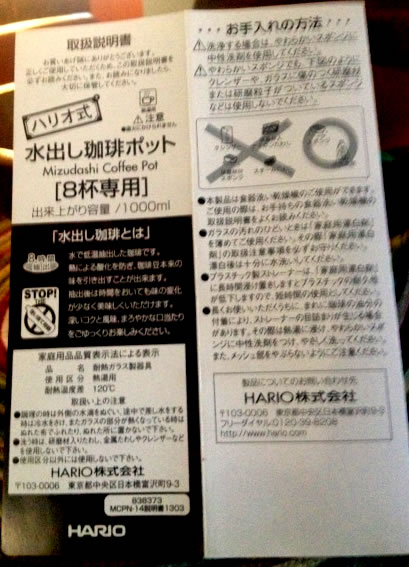 I extract the leaflet and reach for my reading glasses. A lot of good they will do me. The instructions are written in Japanese!
I extract the leaflet and reach for my reading glasses. A lot of good they will do me. The instructions are written in Japanese!
This has to a prank! A poorly-timed April Fool’s joke? Is this an oversight or revenge? Are they still angry over World War II? I do a 360, looking for the hidden camera. Come on out, son of Allen Funt. I know you’re hiding somewhere.
I turn the paper over, hold it upside down, refold it, then unfold it again. Nope. It’s unmistakably Japanese.
I grab for the carton. There are instructions on one of the panels, but they are also in Japanese. Even the illustrations are in Japanese. There are caution warnings with Xs and lines running through the pictures. Not only do I not know what to do, but I have no idea what it is that I’m not supposed to do. The only English words on the box are “Coffee Pot” and ”Made In Japan.” This already-known-to-me information definitely warrants a DUH!
A feeling of helplessness and ultimate frustration has clouded my day. The only thing standing between me and the perfect glass of iced coffee is a series of characters in black ink that are incomprehensible, and appear to the uneducated as if someone’s finger got stuck on the pound key during an overzealous tweet.
I search my brain and can think of no one I know who speaks Japanese. A crash course at Berlitz is instantly dismissed as a viable option. As I ponder what to do next, the proverbial light bulb suddenly goes on. The “aha” moment has dawned.
I live in a small, but very savvy little town that is hip to the benefits of omega 3 fatty acids. We probably have as many sushi bars per capita as Tokyo. (Well, maybe not Tokyo, but you get my drift.) There has to be a Japanese chef somewhere in this community willing to help me out.
It is lunchtime of the following day when I hit my first Asian Fusion establishment. I am less than comfortable walking into the restaurant asking only for assistance, so I sit down at the counter and decide it is only right that I order something to eat. To be perfectly honest, although I do enjoy this type of food, I’m not an aficionado and don’t know a futomaki from a hosomaki. When it comes to ordering, I have always depended on the kindness of strangers. Or friends.
I peruse the menu for something that doesn’t seem too threatening. As I’m deciding between a California roll and a more ominous-sounding caterpillar roll, the chef approaches. We chat briefly, I place my order, then I shyly withdraw the instruction sheet from my pocket. “I was wondering,” I say hesitantly, “can you help me out with these? They’re written in Japanese.” The poor man’s face turns red with embarrassment. He leans forward and whispers to me, “I’m Korean. Please don’t tell anyone.” I eat my California roll and leave.
Undaunted, I enter the second establishment. I place my order and again question the chef. “Pardon me,” I ask, “are you Japanese?” He looks at me as if he is about to say “duh.” To explain my seemingly stupid question would be to reveal the other man’s secret, so I bite my lip. I show him my instructions. He says he’s sorry he can’t help me. While he is of Japanese descent, he was actually born in Brooklyn.
I decide against trying a third time. The spicy tuna temaki is starting to repeat on me.
On my way home, it occurs to me that there was a simpler way that would have avoided all this fuss and indigestion. Consult Google! After downing an antacid, I type in the name of the coffee maker and sure enough, on the manufacturer’s web site, is the English version of the directions for use. I’m excited and happy as I print a hard copy. The elation lasts for the 10 seconds it takes me to realize that, while the text is now something I can actually read, all of the essential information regarding measurements is presented in the metric system.
I’m considering giving up coffee altogether. Instead, I devote another 90 minutes (I’m no good in math) to refreshing my understanding of solid and liquid measurements, as well as long division. By sheer trial and error, I manage to more or less successfully convert grams and liters into good old patriotic American ounces. Victory is mine!
Was it all worth it? I have to confess that the following day, after the 14-hour brewing and refrigeration process, I was treated to the best glass of iced coffee I have ever tasted. At least I want to believe that this was so.
I’m still rather incredulous that a foreign-made product could be distributed and sold in the United States without including English-language instructions. But then again, I should be grateful that it was only a simple coffee maker, and not my Toyota!



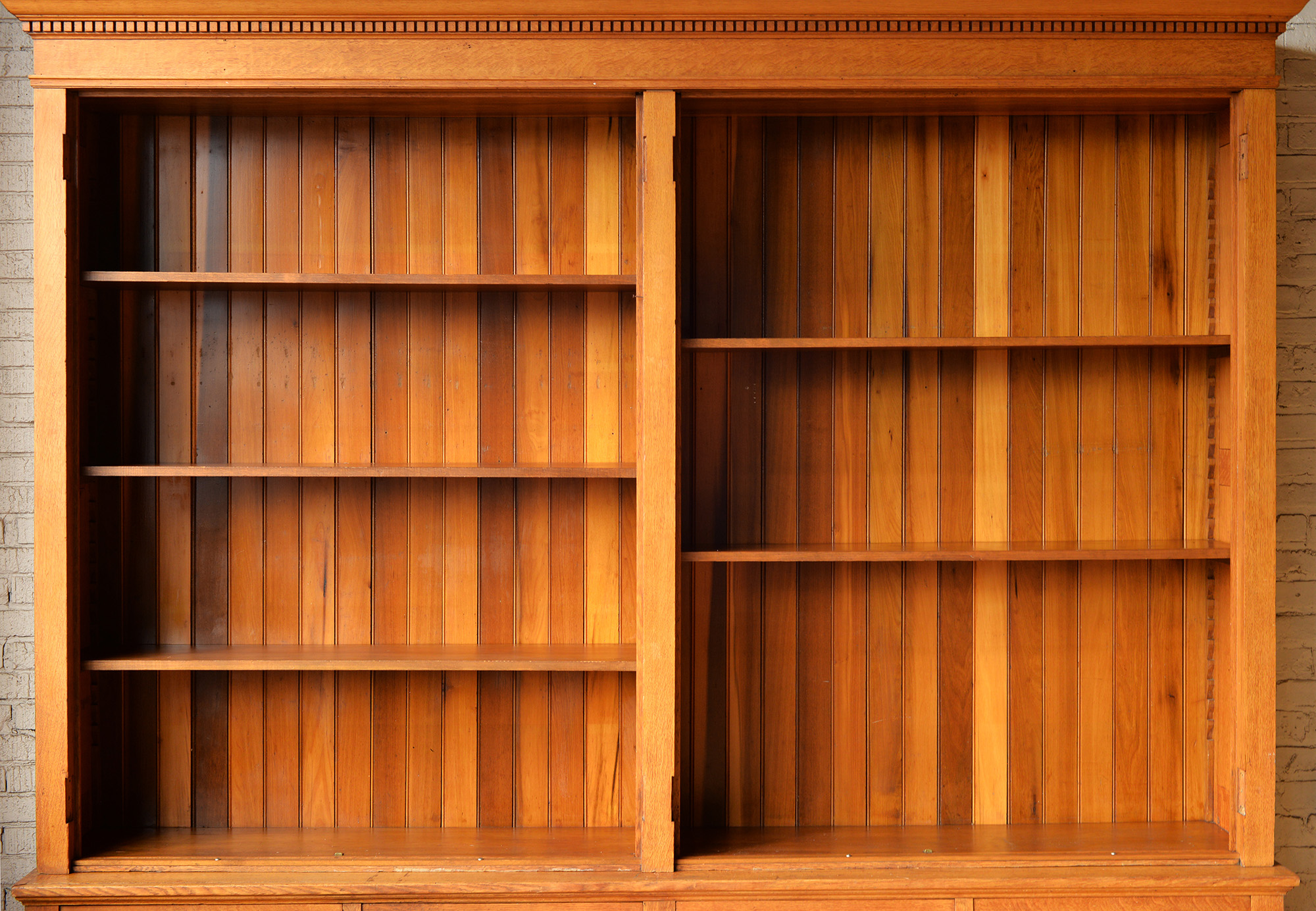
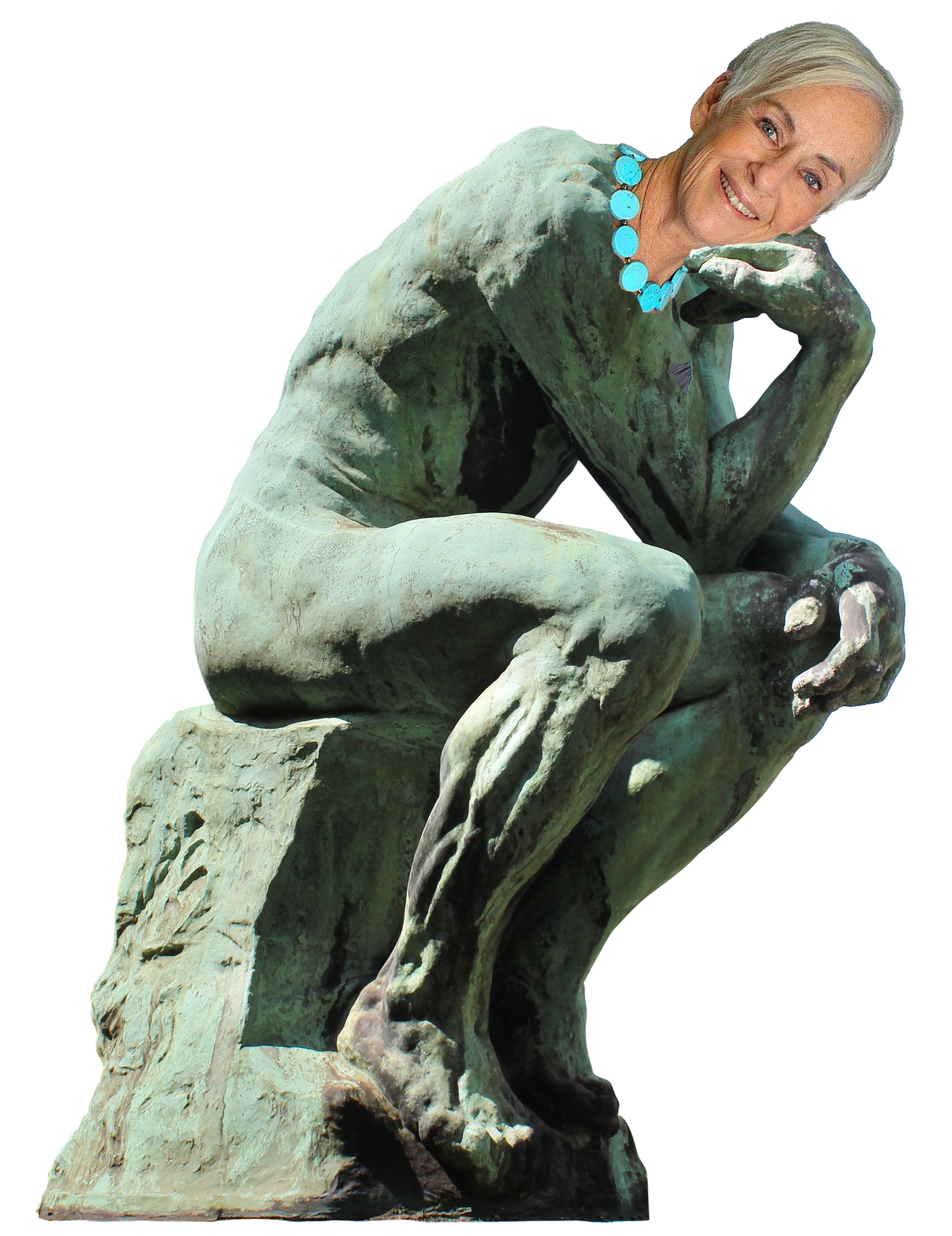

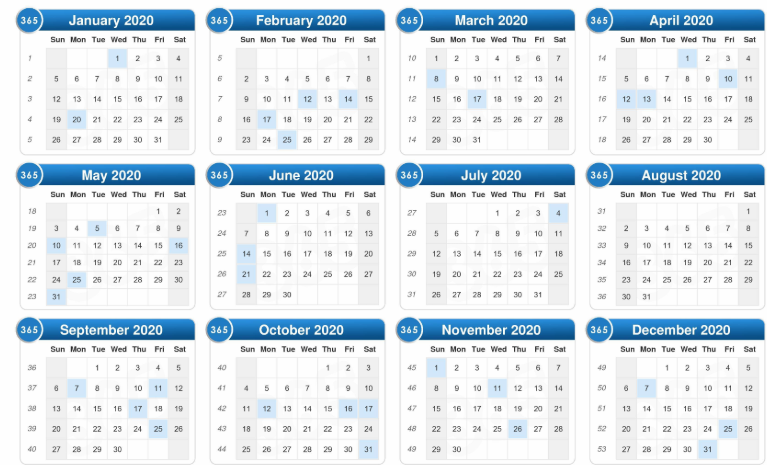
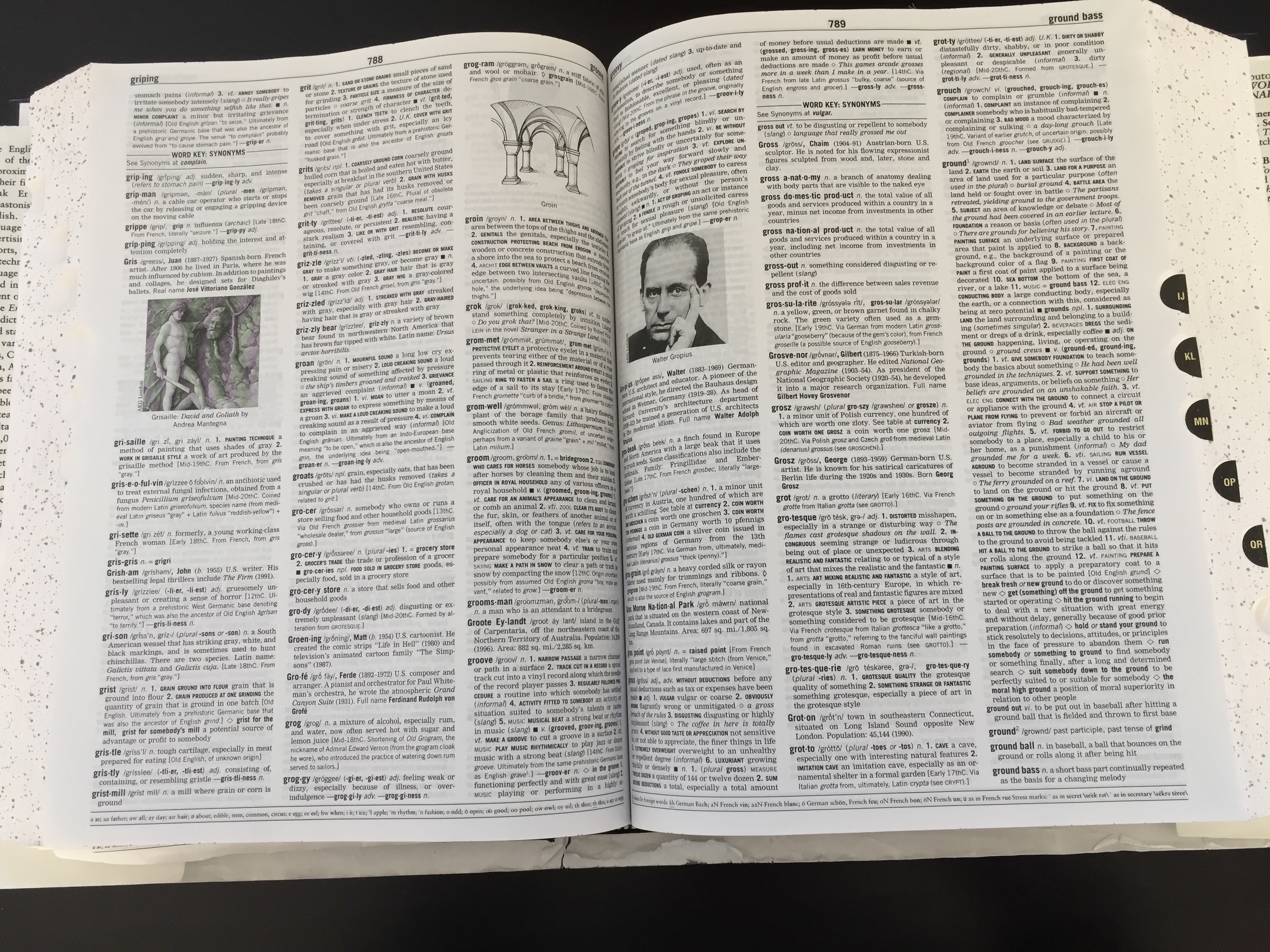
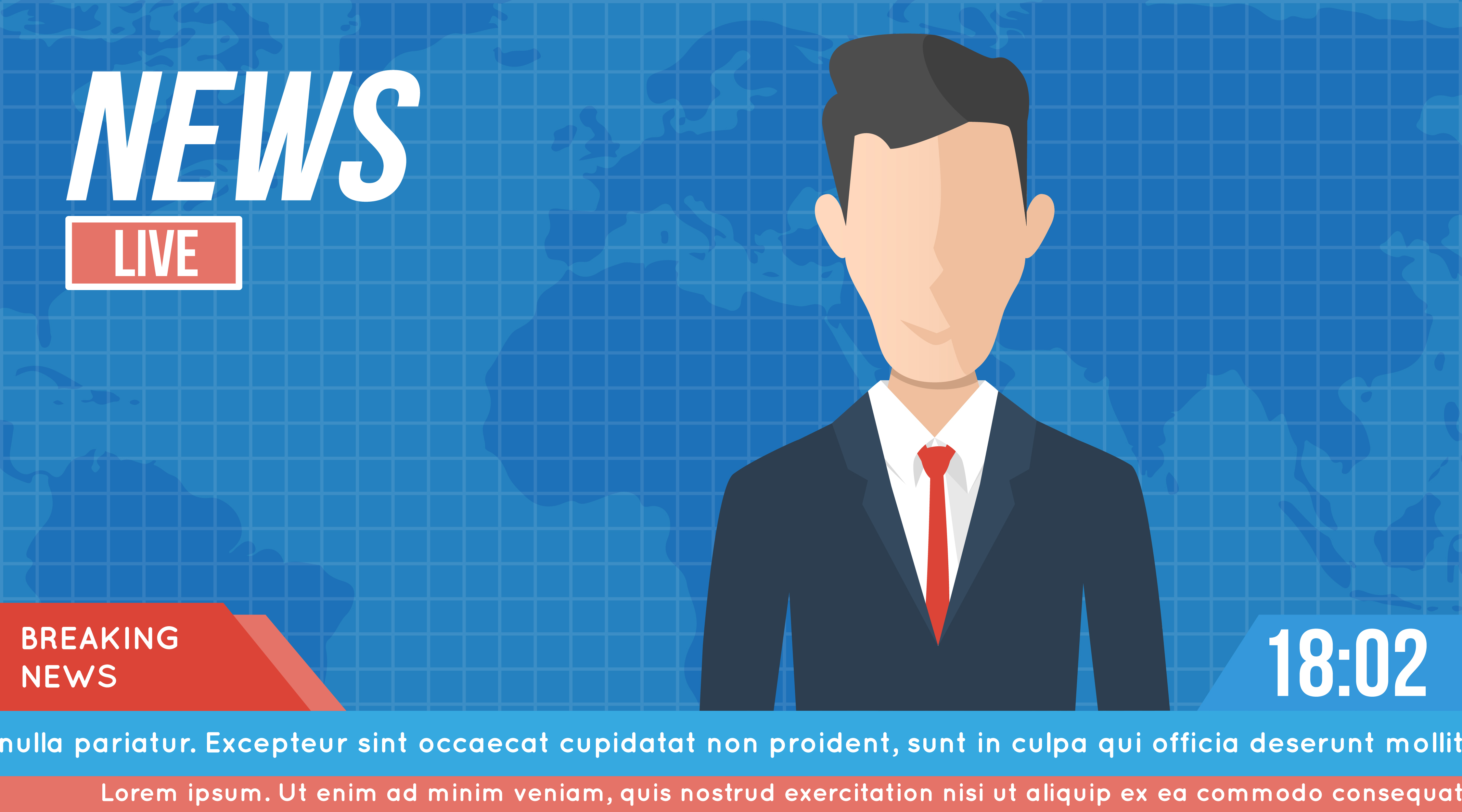
Next time, ask Aloh to translate for you. She taught herself Japanaese and is now studying both Japanese & Korean at Columbia.
I forgot about our prodigy. But then again, it would have been too easy and I wouldn’t have had anything to write about!
Susan, once again you brought me to laughter.
It was a great way to start my day with a very funny story. You did it again another fun filled blog. I can’t wait for your next one.
Gilly
Once again, thanks, Gilly! =========== Read my blog: http://www.1000thingstosaybeforeidie.com